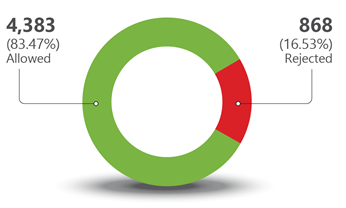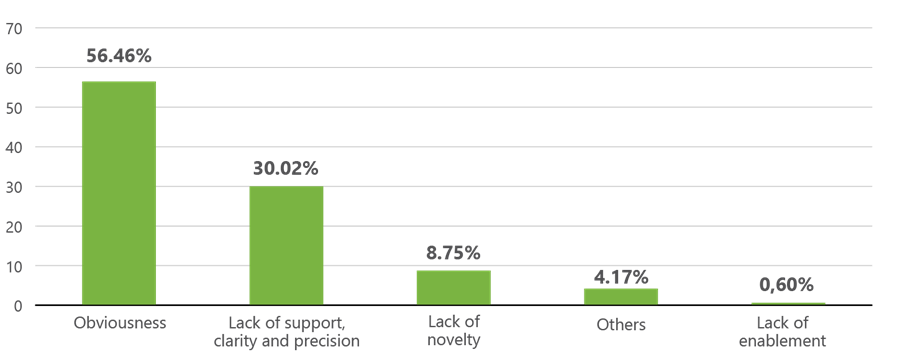The Brazilian Patent Office (BRPTO) is improving its examination procedure, trying to reduce the backlog. As more decisions are issued, we are learning about the approach of the examiners to different topics in patent law. An ongoing hot topic is whether the examiners are accepting post-filing experimental evidence during patent examination.
The Metallurgy and Material field examination division of the BRPTO issued an interesting decision on PI 0920279-0 accepting post-filing evidence during appeal stage. The case is directed to a nickel-chromium alloy with high oxidation and carburization resistance, long-term breaking strength and creep resistance. The applicant successfully reversed the BRPTO’s unfavorable opinion during the appeal stage, using post-filing evidence.
In the first office action issued in the appeal stage, the BRPTO requested the limitation of the claimed alloy based on the examples disclosed in the specification. The BRPTO’s restrictive position was grounded on article 25 of the Brazilian Patent Statute, which establishes that “the claims must be supported on the specification, characterizing the particularities of the application and defining, in a clear and precise manner, the matter object of protection”.
The interpretation of the BRPTO is not correct since the purpose of an example is to solely illustrate how the invention works and can be reproduced, and not to limit the claims. The restriction of the claims based on the matter supported by illustrative examples of the application is a very usual type of requirement in Brazil.
From the 868 cases rejected since the beginning of 2018 and until the end of 2021 in the Metallurgy and Material field, 30.02% were rejected based on this ground, being the second biggest reason for rejection decision in said area, as can be seen below:
Allowance Rate in the Metallurgy & Materials Field (2018 – 2021)

Reasons for the Rejection Decision in Metallurgy & Materials Field (2018 – 2021)

There are several examples of applications in the Metallurgy and Material field, wherein the BRPTO requested the restriction of the claims based on the matter supported by the illustrative examples of the specification:
“The amount of element Ti in the alloy composition is fundamental in the present invention to obtain the required fatigue strength limit, that is, L10. Element Ti must be present in the alloy and with the percentage provided in Tables 1 and 2. In case the element is not present or the percentage is higher than that described in Tables 1 and 2, the L10 tolerance limit will not be reached. Thus, the applicant should introduce the lower range of element Ti in the alloy composition, as there is a need for the presence of this element in the alloy composition of the present invention”. (PI0406697-9)
“Independent claim 1, referring to the alloy composition of the present application, is not describing element boron as essential, however, according to table 1 of the specification element boron is essential in the alloy composition. Accordingly, the applicant must amend independent claim 1 by placing element boron also as an essential element of the alloy composition.” (PI0606487-6)
“[I]ndependent claim 1 proposed in this opinion was based on example I-1, of the said table, where a composition was described containing elements C, Mn, Si, Al, S, P, Mo, Cr, W and V, being added to this composition the range of element N.” (PI0814514-8)
“The limitation of the alloy composition, described in independent claims 1 and 3 of this opinion, occurred from the compositions of table 1 of the specification of the present application. This reduction in the ranges of the elements of the alloy was based on the forms of execution mentioned in the specification, table 1, according to item 3.39 of Rule #124/2013.” (PI0820354-7)
In the case of PI 0920279-0, the required limitation would result in an excessive limitation of the applicant’s invention, since it would result in an alloy encompassing essential elements in a very narrow range, besides encompassing non-essential elements.
The applicant challenged the BRPTO arguing:
– the illustrative examples form part of the specification and the latter supports the claims of the application, which precisely and clearly define the object of the patent application;
– the purpose of an illustrative example is merely to illustrate how the invention works and, therefore, it should not be used as basis for the restriction of the claims;
– there is no legal provision in the Brazilian Patent Statute requiring that a claim must be restricted to the matter disclosed in the examples of an application;
– the application contains sufficient information to enable a person skilled in the art, using his/her common general knowledge, to perform the claimed invention without undue burden and without needing inventive skill.
Moreover, with a view to increase the chances of obtaining a broader scope of protection, additional examples demonstrating alloys other than those disclosed in the examples of the specification were submitted, as well as additional tests demonstrating that the technical effects proposed by the invention are also reached by said alloys.
The submission of the additional data was supported on item 3.89 of BRPTO’s Rule #124/2013, which establishes the Examination Guidelines for Patent Applications – Block I – and on item 9.1.3 of BRPTO’s Rule #208/2017, which establishes the Examination Guidelines for Patent Applications in the Chemistry Area, which are reproduced below:
“Item 3.89. Once the examiner has established that a broad claim is not supported by the specification, the burden of demonstrating the contrary falls on the applicant. In this case, the examiner may rely on a published document, in order to support his/her reasoning”. (Emphasis added.)
“Item 9.1.3. According to item 3.89 of the BRPTO’s Examination Guidelines for Patent Applications – Block I, the burden of proving the support of the claims falls on the applicant and, for this purpose, additional proofs are accepted during the technical examination, provided that they are exclusively intended to complement the information already contained in the application as initially filed.” (Emphasis added.)
Nonetheless, since the submission of additional examples during the examination procedure is more than often rejected by the BRPTO for being considered addition of new matter, it was stressed in the reply that the additional data were being presented as additional evidence, with the sole purpose of proving that the technical effect proposed by the invention could be obtained with alloys different from those shown in the illustrative examples contained in the specification as originally filed, reason why they should not be considered as a basis for the limitation of the claims.
The BRPTO accepted the arguments and additional data submitted during the appeal stage based on item 5.16 of BRPTO’s Rule #169/2016, which establishes the Examination Guidelines for Patent Applications – Block II, reproduced below:
“Item 5.16. In case of results/tests/essays or similar provided during the technical examination, even after the request for examination, with the aim of testifying the technical effect of the invention, the submission of said data in the applicant’s argument must be inherent to the matter initially disclosed. In such cases, the technical effect of the invention must be described in the matter initially disclosed, even if not in a quantitative manner.”
Based on the above, the applicant was able to obtain the allowance of the application in the appeal stage, protecting its innovation in Brazil.
It can be concluded that whenever the BRPTO requires the limitation of the claimed matter based on the illustrative examples of the specification, and such limitation jeopardizes the applicant’s interests in Brazil, it is worthy to challenge said objection. In this sense, the submission of additional examples/tests may substantially increase the chances of success, provided that said new data are exclusively intended to complement the information already contained in the application as initially filed. Otherwise, the new data will be considered addition of new matter and will be disregarded by the BRPTO.
________________________
To make sure you do not miss out on regular updates from the Kluwer Patent Blog, please subscribe here.


